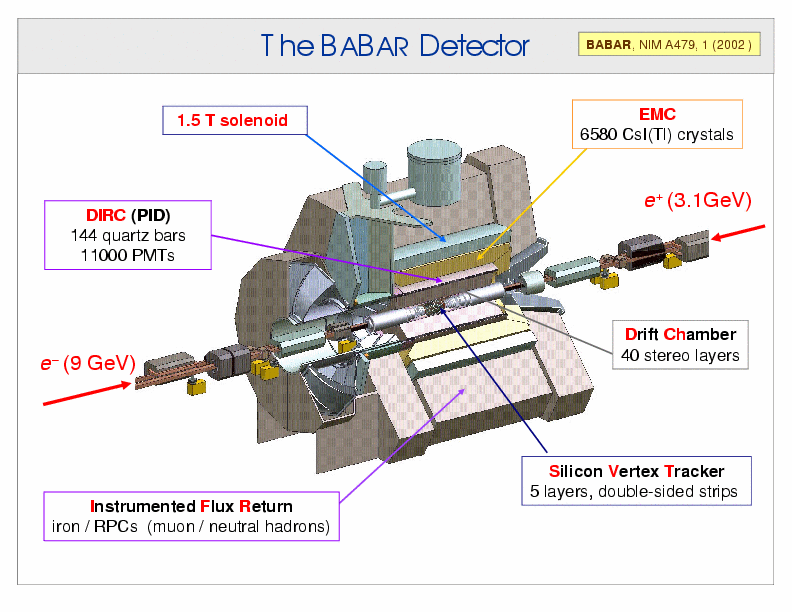In the following a typical detector concept is discussed using the example of the BABAR detector:

* To reconstruct decay vertices with spatial resolutions of O(100 μ) SILICON VERTEX DETECTORS are placed close to the interaction point detecting charged particles.
* Tracks of charged particles are reconstructed using a DRIFT CHAMBER device placed inside a MAGNETIC FIELD (e.g. solenoid field) in order to measure the charged particle's momentum (p=z*e*B*R) and the sign of its electric charge.
Measuring in parallel the specific ionization (dE/dx) in the DRIFT CHAMBER LAYERS allows to identify the charged particle.
* For high momenta dE/dx alone does not discriminate sufficiently between e.g. pions and kaons. For this purpose a CHERENKOV DETECTOR is placed between the DRIFT CHAMBER and the subsequent ELECTROMAGNETIC CALORIMETER,
* The ELECTROMAGNETIC CALORIMETER consists of several thousands CsI crystalls and measures the energy of electrons/positrons and photons.
* Behind the ELECTROMAGNETIC CALORIMETER there is the 1.5 Tesla solenoid and followed immediatley by the magnetic iron flux return. This flux return is instrumented (INSTRUMENTED FLUX RETURN) with several layers of muon detectors.
High energetic muons will penetrate all the detector material in front of the INSTRUMENTED FLUX RETURN. If high energetic pions will reach the INSTRUMENTED FLUX RETURN the energy deposition will look differently (on a statistical basis) with respect to the signal caused by muons.
Using WIRED a BABAR detector picture including reconstructed events can be generated which visualizes a typical event and the detector response.